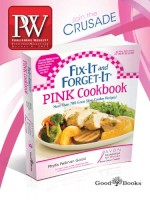It is hard to believe but there is a new regulation out there that demands even stricter product documentation than the CPSIA (Consumer Product Safety Improvement Act) for children's products. Say hello to the 2009/48/EC Toy Safety Directive (TSD), effective July 2011, which applies to all toy manufacturers exporting to the European market.
The most tedious part of the directive is the Bill of Materials (BOM), which must detail all relevant substances and components used to manufacture the export toy. "The biggest headache in this is that, unlike the paper industry, where Material Safety Data Sheets [MSDS] for chemical substances such as glue, varnish and ink have been in use for a very long time, the textile industry is nowhere near as developed in this regard. So it is very difficult to have the information readily available," says director Sarah Shrimplin of paper/toy products company Locomotive, which counts Europe as its biggest market.
Under this directive, a component's type, quality reference, and usage (by percentage of weight) in each toy product need to be stated in the BOM, and accompanied by an MSDS, adds Shrimplin. "We have to do the BOM documentation for every run. So even if we have successfully exported one production run of a toy a couple of months ago, we will have to file the documents again if we receive a new order for the same quantity from the same client in the same country. It is understandable, since the materials used in the second run may not originate from the same suppliers (though we try as much as possible to avoid this) or we may have to tweak the design or pattern based on client feedback."
Safety requirements are stringent. Manufacturers have to provide detailed descriptions of the product design and manufacturing process, age suitability, grade level and intended product use. A general description and a color picture of the product must also accompany the BOM and technical documentation. Additionally, the directive includes a Safety Assessment Procedure, which requires manufacturers to identify chemical, physical, mechanical, electrical, fire, hygiene and possible radioactive hazards associated with the toy product.
Naturally, chaos reigned when the directive first came into effect. At Locomotive, a new title produced for an Italian publisher at breakneck speed was held back in the factory for over a month while the publisher waited for government approval to import the goods. "It was a first production, and it was also the first time we had to do the whole BOM documentation. Lacking the MSDS from the textile suppliers, it was slow and hard going."
Conformance is certainly not easy. Under the directive, importers have the same responsibilities as the client that imports the toy. They have to ensure that the manufacturer produces the appropriate technical documentation, instructions, safety information and CE marking on all toys. It is also the importer's responsibility to make sure that each imported toy carries a type, batch or serial number. Manufacturers, on the other hand, have to draft a declaration of conformity (DoC) for each product they sell to the European market, and keep on file each product's DoC and all supporting technical documentation for ten years.
Adding to the challenge of this new directive is the confusion and varied interpretations of what constitutes a toy. Adds Shrimplin, "Different publishers within the same country would ask for different requirements in terms of documentation. This has partly to do with the individual company as well as government policies following up on the directive."



 Volume 259
Issue 32
08/06/2012
Volume 259
Issue 32
08/06/2012





